by Eric Meier
I remember in my (slightly) younger days, stepping into a big box hardware store and picking up some shrink-wrapped boards labeled “mahogany” with prices that seemed just too good to be true. I told the employee that they had very good prices on mahogany, and he half-smirked and hesitantly commented “well, there’s a lot of different types of mahogany out there…” So began my early lessons in this sometimes-coveted and sometimes-disdained wood. Little did I know that these discrepancies stemmed from the woodworking equivalent of comparing apples to oranges.
Un-jumbling the Mahogany mess
Hypothetical situation: So you’ve just stumbled across some sort of “mahogany” wood, and you’re wondering if you have the real deal. After all, there are currently over a half dozen types of mahogany listed on The Wood Database. Much like cedar, the “mahogany” label gets tossed around with relative liberality—and not always with regard to the botanical designation of the wood in question. Ultimately, the ambiguous term mahogany remains somewhat subjective. But regardless of where anyone happens to draw the line on what is and is not true mahogany, certain facts and scientific classifications of the trees remain constant, and a general consensus can at least be made on the objective facts surrounding these woods.
But before we sort everything out, it would be helpful to ask a needed question: why? Why bother trying to sort things out? If it looks like mahogany, what’s the difference anyhow? A lot, it turns out. Beyond simply being worth more in terms of dollars per board-foot, there are practical implications to using true mahogany. Listed below are the ideal characteristics (hopefully) found in the wood: chances are most non-mahoganies will lack at least one (or more) of these characteristics.
What makes mahogany so great
“Rosewood.” “Teak.” “Satinwood.” Each well-known wood has along with it a set of expectations. Mahogany is no different. From the top-notch mahogany of yesterday, one would expect to encounter the following characteristics of the wood:
- Excellent workability. Mahogany is known for its cooperative nature and easy sanding and machining, with a Goldilocks-esque balance of density thats just hard enough but not too hard. When the grain is straight and consistent, there’s not much that can go wrong.
- Excellent stability. As much as it’s known for its workability, mahogany is equally known for its superb dimensional stability. Flat pieces will remain flat. Joints and glue-ups will remain intact. In the midst of seasonal changes in humidity, mahogany exhibits minimal shrinkage and swelling.
- Decent rot resistance. Perhaps not to the same level as Teak or other exotic tropical timbers, but certainly respectable. Though younger plantation-grown trees aren’t quite as durable as the older wild-grown trees of centuries past.
- Beautiful grain. Mahogany can sometimes be rather plain and almost utilitarian, but on other pieces, it ascends to the heights of sophistication. What antique bombe chest would be complete without exquisite crotch mahogany veneer drawer fronts?
- Large, clear lumber. Mahogany trees get huge. They’re both tall and stout, yielding long, wide, knot and defect-free boards.
The Inner Circle: Swietenia
By even the strictest standards, woods in the Swietenia genus comprise what is sometimes known as “genuine mahogany.”
Cuban Mahogany (Swietenia mahogani)This is the original mahogany. Historically, these huge trees yielded exceptional lumber, but over-harvesting and just plain wastefulness (logs as large as twelve inches in diameter were used as firewood) led to this species’ depletion. In 1946, Cuba banned all exporting of the wood due to over-harvesting and high demand; it has also been in scarce supply from other sources in the Caribbean as well. Today, the lumber has become so obscure that the term “genuine mahogany” now applies almost exclusively to its close relative, Honduran Mahogany (Swietenia macrophylla). Small boards and pieces are intermittently available: these are usually from storm-damaged trees grown locally (i.e., within the United States).
Honduran Mahogany (Swietenia macrophylla)Following closely in Cuban Mahogany’s footsteps, Honduran Mahogany is from the same genus (Swietenia), and it’s closely related in nearly all characteristics. All species within the genus are listed on CITES appendix II, and nowadays a fair amount of this wood is grown on plantations. It’s sold under a variety of common names, including American Mahogany, Genuine Mahogany, Big-Leaf Mahogany, and Brazilian Mahogany. Despite the abundance of common names, they usually all refer to just one species—when in doubt, verify the scientific name: Swietenia macrophylla. It’s every bit a true mahogany as the original Cuban species that became commercially exhausted in the mid-20th century.
Identification: Swietenia species can be very hard to tell from one another, but they can usually be distinguished from other species listed as mahogany (see following species further on in this article). All Swietenia species will have marginal parenchyma when viewed on the endgrain (see 10x endgrain scan). What this means is that there will be rows of light brown cells at the border of every growth ring—somewhat mimicking the annual growth rings found in temperate ring-porous woods. While other lookalikes such as African Mahogany (Khaya spp.) will generally not have these marginal parenchyma bands (though the color of the wood itself may change from light to dark simulating growth rings as well, the tight parenchyma rows will usually be lacking). Presence of marginal parenchyma strongly suggests a Swieteniaspecies, though in rare circumstances, Khaya species can also display these cells as well.
In finished pieces: Another trick to tell Swieteniaspecies from Khaya species, especially if you do not have access to the endgrain, is to look for ripple marks on a flatsawn surface of the wood. Basically, on many pieces of Swietenia-genus mahogany, the rays (small reddish brown slits) will collectively be arranged in neat little rows (called storied rays), which appear as minute little ripple marks that are seen clearest on flatsawn portions (see accompanying scan—you will more than likely have to view the full-size image to make out these small details). These ripple marks are sometimes (but not always) seen in Swietenia species (as well as Sapele—see further down this article), but almost never in the African Khaya species. An absence of ripple marks is ambiguous (could be either genera), while the presence of ripple marks strongly points to a Swietenia species.
How not to tell them apart: By color or weight. Swietenia species of mahogany, depending on the growing conditions and age of the tree, can vary widely in color and density. It’s all over the map. Some can be darker red and with dark streaks, others can be much paler and lighter in weight. Just viewing the facegrain of a wood sample and using your gut instinct to differentiate the two is unreliable.
Mexican Mahogany: It should be noted that a third Swietenia species is sometimes encountered: Mexican Mahogany (Swietenia humilis). This tree is much smaller than the other two species listed above, and as a result, it usually yields lumber of poorer quality due to the inherent problems of smaller trees (that is, knots and irregular grain is usually present, as well as much smaller available lumber). But from a practical standpoint, wood from all Swietenia species should be evaluated objectively irrespective of the actual species. It is the author’s opinion that the primary reason that Cuban Mahogany has been held in such high regard is because the wood was originally collected from very large wild trees which yielded excellent lumber compared to today’s plantation grown mahogany—it’s all based on growing conditions and tree age, and all other things being equal, Swietenia species wood is virtually identical.
The Outer Rim: Khaya
Depending on who you talk to, African Mahogany in the Khaya genus may or not be considered the real deal. For most, it’s close enough in appearance and characteristics to carry the mahogany label without controversy, but purists will be quick to draw a distinction between the mahoganies of the New World and those from Africa.
African Mahogany is comprised of a handful of species in the Khaya genus, such as K. anthotheca, K. grandifoliola, K. ivorensis, and K. senegalensis. While these species are from an entirely different genus (and continent) than the wood classed as “genuine mahogany,” taking a step up the botanical ladder from genus to family, both fall into the Meliaceae family, so the two, while not directly related, aren’t far off in the family tree. And the family likeness is apparent in the wood as well. Appearance-wise, most people do a double take and aren’t sure if they’re looking at Khaya or Swietenia mahogany. Both types also come from very large trees, so quality lumber in very large sizes and widths is common. African Mahogany also works well, though it tends to have a more interlocked grain than Swietenia species, so tearout and fuzzy surfaces (during planing or carving) can be an issue, but overall it’s still tolerable to machine.
Identification: As mentioned previously, the wood of African Mahogany features an endgrain that is, for the most part, absent of any discernible annual or seasonal growth rings. Though the color of the wood can gradually change color through different seasons, Khaya species usually (rare exceptions do exist) lack the marginal parenchyma that are so common in Swietenia species (see the endgrain scan of African Mahogany to contrast the relatively bland endgrain with the clearly delineated growth boundaries of the Honduran Mahogany endgrain sample shown further up).
Interlocked grain: In addition to the lack of ripple marks (explained above under Swietenia species), Khaya species also tend to have a more interlocked grain, and will exhibit more pronounced ribbon-stripe patterns, especially when quartersawn. However, as with nearly all characteristics differentiating the two genera, there are outlyers and exceptions to the rule. But taken collectively, when considering the marginal parenchyma, ripple marks, and interlocked grain, an increasingly confident identification may be made of an unknown or questionable sample.
The Periphery: Meliaceae
Along the outermost fringes of what most consider to be called mahogany, there are a handful of other genera and species that are technically related to mahogany: much like the African Mahogany species in the Khaya genus, this somewhat eclectic group of hardwoods are all members of the Meliaceae family.
Similar to mahogany: Sometimes called Sipo, or even Sipo Mahogany, this wood has similar mechanical and working properties to genuine mahogany, and the overall appearance, while generally a bit darker in color, isn’t too far off either.
Different from mahogany: Spotty availability coupled with its overall obscurity has probably kept this wood out of the limelight. It lacks the exceptional dimensional stability of genuine mahogany, though it is by no means an unstable wood.
Sapele (Entandrophragma cylindricum)
Similar to mahogany: Very large trees yield clear quality lumber that resembles genuine mahogany in both appearance and mechanical properties.
Different from mahogany: Sapele is a star in its own right, and has its own unique characteristics. It’s darker in color, heavier, and exhibits more varieties of figured grain (pommele, ribbon-stripe, etc.). Its interlocked grain also mean it’s a bit more challenging to work with than genuine mahogany.
Identifying Sapele and Utile: These two species are both in the Entandrophragma genus and are very closely related. They may be separated from Swietenia and Khaya mahogany on the basis of their endgrain. Both Sapele and Utile have banded parenchyma (visible as horizontal lines in the accompanying scan) that occur consistently throughout the wood—not just at the annual growth boundaries. Additionally, the two woods tend to be heavier and darker than Honduran or African mahoganies, and both have a pleasing cedar-like scent when being worked. Sapele can usually be separated from Utile on the flatsawn surface by checking for storied rays. Sapele will have ripple marks (formed by the storied rays) evident on the flatsawn surface, while Utile lacks this feature. If the woods are quartersawn, Sapele has narrower, tighter, and more uniform ribbon stripes, while Utile’s are wider and more erratic.
Similar to mahogany: Bosse is closer in color and grain to genuine mahogany than the two previous species, and its the weight, stability, and mechanical characteristics are also comparable too.
Different from mahogany: The grain of this species is all over the map: sometimes it’s straight, sometimes it’s interlocked or highly figured. The inconsistent availability and figured grain have primarily limited this wood to decorative wood veneer applications.
Spanish Cedar (Cedrela odorata)
Similar to mahogany: Grain can be somewhat similar to genuine mahogany, though color is much paler. Good stability and workability.
Different from mahogany: Considerably lighter in both color and weight. Much softer. Very aromatic. Not a practical mahogany replacement in most instances.
Australian Red Cedar (Toona ciliata)
Similar to mahogany: Sometimes referred to as Indian Mahogany, this wood is known to woodworkers in North America as Australian Red Cedar. It was once placed in the Cedrela genus alongside Spanish Cedar (Cedrela odorata), and the two are very similar in most respects. The color can be a bit more reddish than Spanish Cedar, but still not quite the same shade as true mahoganies.
Different from mahogany: Still lighter in both color and weight, and softer. Very aromatic. May be a practical mahogany replacement in some instances.
Similar to mahogany: Sometimes sold under the name “Royal Mahogany” by flooring dealers, the overall appearance, weight, and mechanical properties are very similar to genuine mahogany.
Different from mahogany: Slightly more difficult to work, and not quite as stable, but still an underrated and obscure species.
Avodire (Turraeanthus africanus)
Similar to mahogany: Sometimes called White Mahogany, Avodire fits the description well. It has similar grain, weight, and mechanical properties—it looks like a blonde version of African Mahogany in the Khaya genus.
Different from mahogany: Besides the obviously color difference, Avodire has poor outdoor longevity, which restricts its use to interior/protected applications. Also, irregular or interlocked grain present can make working and machining troublesome at times.
African Walnut (Lovoa trichilioides)
Similar to mahogany: Despite its common name, African Walnut is not closely related to the true walnuts in the Juglans genus. The grain and density can closely mimic genuine mahogany on some pieces, and its mechanical properties and stability are comparable to mahogany as well.
Different from mahogany: Color is much more variegated and streaked, and is generally darker and redder than most mahogany. Also, the interlocked grain can make working this lumber less pleasant than Swietenia species.
Similar to mahogany: Botanically, it’s in the Meliaceae along with the rest of the woods listed from here on up. Also, it’s weight, strength, and workability properties are similar to genuine mahogany.
Different from mahogany: Being a ring-porous hardwood, the grain isn’t really too similar to mahogany, and its dimensional stability isn’t quite up to standards either—at least not in comparison to mahogany. In terms of appearance, it’s probably the least likely to be confused for mahogany of all the woods on this entire list.
Outliers: Not in the Family
Despite any superficial resemblance to genuine mahogany, there are still a number of wood species that are completely unrelated to any of the mahoganies in the Meliaceae family. You have to trace pretty far up the hierarchal tree to find any sort of botanical commonality between any of these woods. Basically, about all you can say that they have in common is that they are all hardwoods (angiosperms).
Philippine Mahogany (Shorea spp.)
Sometimes called Lauan, this wood is frequently made into plywood. Of all the various trees that are outside of the the Meliaceae family, perhaps the many species within the Shorea genus come the closest to genuine mahogany in terms of overall appearance and working properties. Unfortunately, there’s a great variation within the Shoreagenus—even more of a window of variation than that found in the Swietenia or Khaya genera. Also, the rot resistance of most Shorea species is much poorer than most types of mahogany. This wood is (thankfully) being called by more honest terms as of late—it goes by the common name Meranti.
Santos Mahogany (Myroxylon balsamum)
Of all the woods with “mahogany” in their common name, this one perhaps is the one most likely to be a sales gimmick to help sell more wood (which figures, since it’s primarily used for flooring—an industry rife with imaginary and flattering names). Although this wood may have a superficial likeness to true mahoganies in terms of grain pattern, it’s much heavier, and quite difficult to work—a far cry from the ideal that one would expect of a wood bearing the name “mahogany.”
Mountain Mahogany (Cercocarpus spp.)
If the naming of Santos Mahogany (Myroxylon balsamum) seemed to push the limits in terms of comparative density with genuine mahogany, then Mountain Mahogany is completely over the top. It is actually one of the densest and hardest woods in the United States—the dried wood is heavy enough to sink in water. To its credit, the wood’s color and overall appearance are vaguely reminiscent of mahogany, and it does have good stability, but that’s about where the similarities end. But the ambitious naming is much more forgivable as this wood is not commercially harvested, and was not done with the motive of increasing sales.
Swamp Mahogany (Eucalyptus robusta)
Despite its common name, this “mahogany” is actually a full-blooded member of the Eucalyptus genus—one of the botanical trademarks of Australia. Even though Australia is considered its own continent, in the world of trees it could almost be considered its own world. Australia has its own version of nearly every type of wood common to outsiders: they have their own maple, walnut, ash, beech, and so forth. However, just because the common name sounds similar doesn’t mean that the wood itself is a close match. In the case of Swamp Mahogany, the wood is slightly more dense and difficult to work, and the dimensional stability is much worse.
Mahogany: it’s tough to spell correctly
There is one last quirk that only applies to online searches. Having access to manually-typed search queries on this website for over a decade now, I can say far and away, mahogany is the most mis-typed and misspelled wood name—probably by a factor of ten. (After all, every other letter is a vowel, with very similar sounds, and you have to get them all right!) And so, in the absence (or failure) of any sort of auto-correct feature, I will list common misspellings of the wood to act as a catch-all net so that users are not ejected into the abyss of “no search results found.” Common misspellings (listed in order of prevalence), are as follows: mahagony, mohagony, mahogony, mohagany, and mahagany. Honorable mentions to the mahogany-relative sapele (which, to be honest, doesn’t really have a single “correct” way to spell it anyway), is also typed as: sepele, sapale, sapelle, sappele.
Are you an aspiring wood nerd?
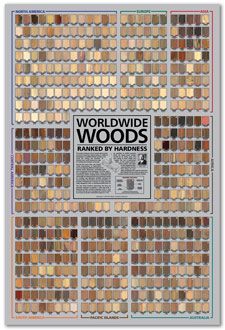

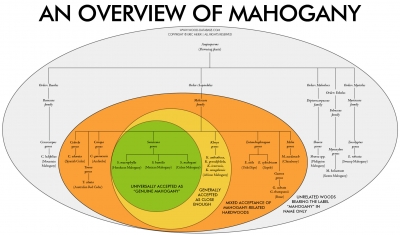
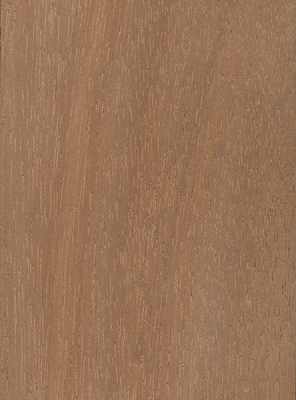
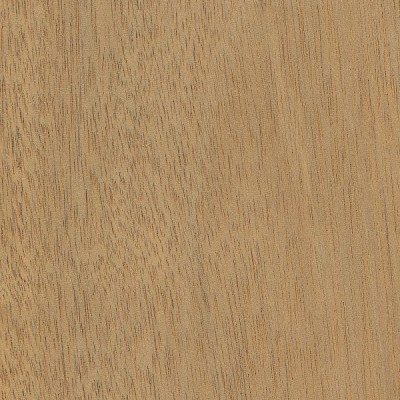
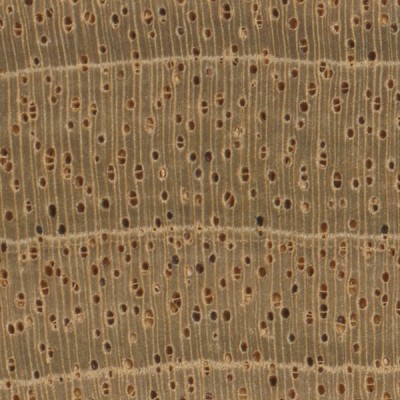
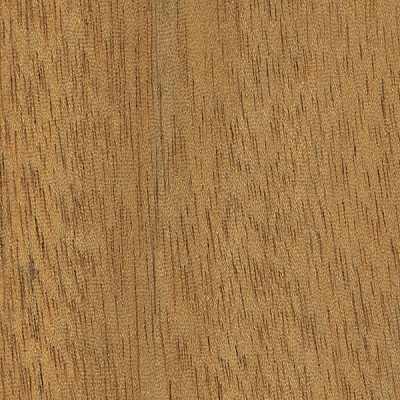
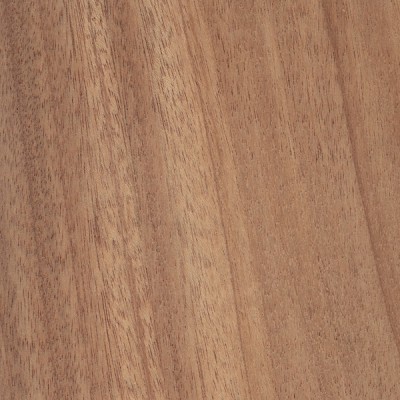
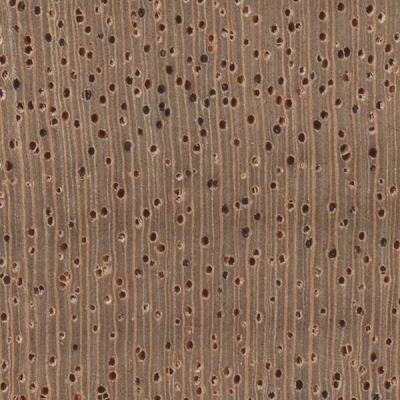
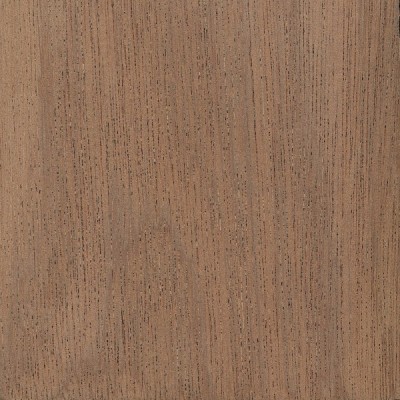
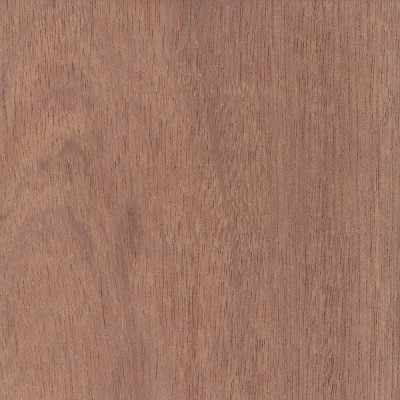
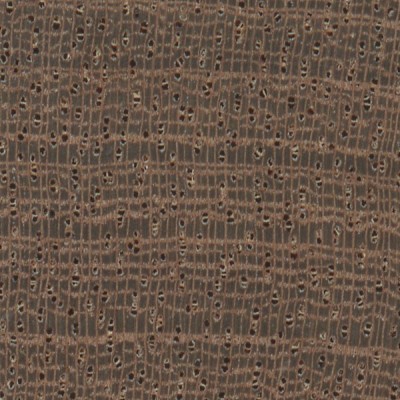
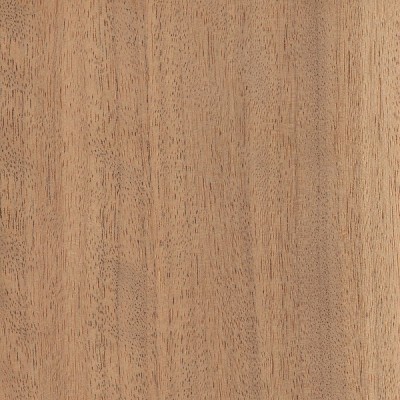
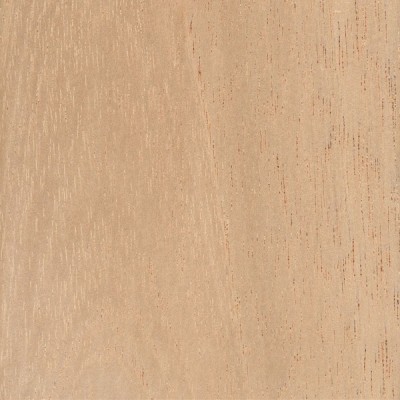
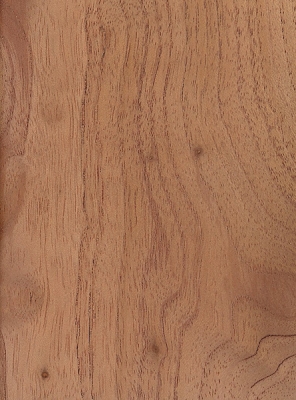
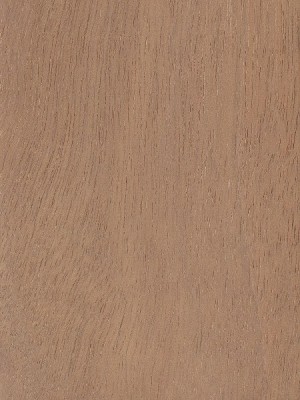
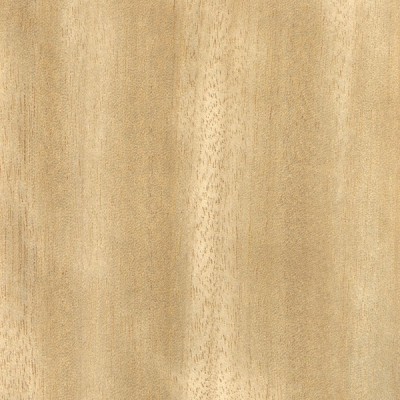
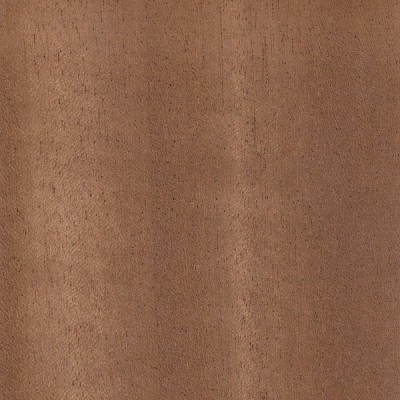
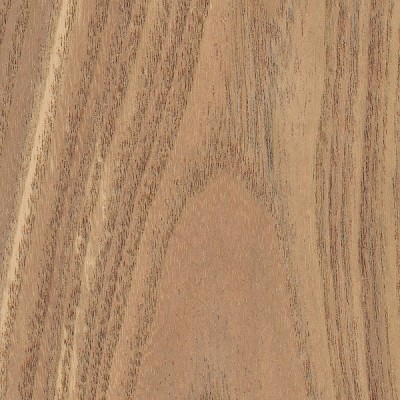
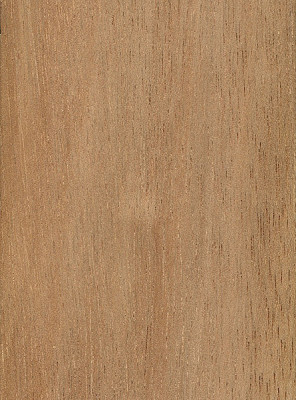
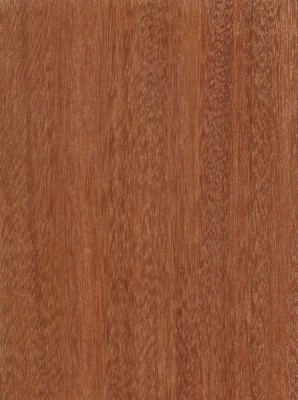
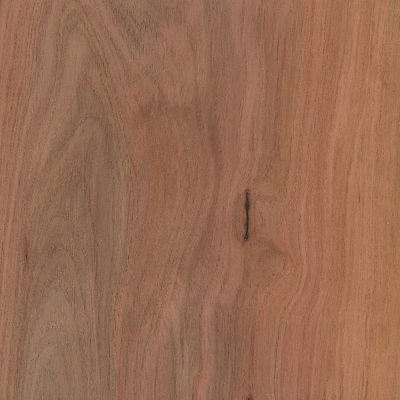
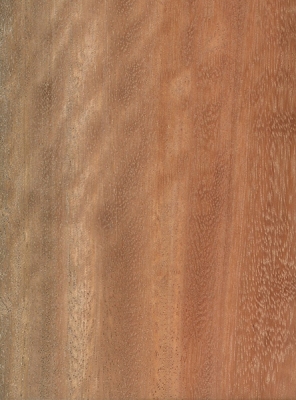



Just as a postscript to the intro story I mentioned at the beginning of this article, some 15 years later I see Menards has added in their online description of their “mahogany” boards that it is (as I had eventually surmised) light red Philippine mahogany. I’m not sure if this is now mentioned on the actual packaging of the wood in the store, but it sure fooled me back in the mid 2000s.
Light red Philippine Mahogany is now being used to build some electric guitar bodies and is called Meranti. I’m not sure when they
Yeah, Epiphone, Squire, and Ibanez for sure. The sales reps for these companies are very clear on tonal training. The wood looks great. It is extremely lifeless and dead in its musical integrity (despite what Google says). It is very cheap to source. You can tap the wood with your finger. Its easier to tap next to a premium wood- to understand the difference. My Gibson SG is by far more resonant and full sounding than Epiphone SG. I’m sure you’ve come across scenarios like this. I have a Meranti Ibanez S series I love to pick up a lot.… Read more »
I am having my house painted and therefore my front door restained . I believe it’s the original stain from 2001, when the house was built. The builder recently told me my door was sapele mahogany. I was lucky to have a nearby woodworker give me a sample of sapele. After sanding my door and trim in a few areas, I suspect it is not sapele and the door and frame are the same but different then the trim wood. Can anyone help me identify these two types of wood and how to stain it so it looks the same… Read more »
What is “lite” mahogany listed on various exterior doors?
HI, would anyone know if this is mahogany ribbon stripe or sapele?
What type of mahogany May this be
Hi Eric. I have a house built in the 70’s in Nova Scotia. It seems to have some kind of hardwood trim throughout. It’s very basic, slightly bevelled, flat-stock trim. I was told today it maybe a type of mahogany. Would you have any idea which type? Cheers.
Hi, our house here in Central Florida was built in the late 50’s. The fireplace mantle and bookcases are original. I’m trying to decide whether to paint or refinish. Someone told me they thought it was white mahogany. Wondered what your thoughts were on the type of wood and preferred finish?
Hey, don’t worry about posting this. I just wanted to say. When I first started I thought distinguishing the different mahoganies was going to be impossible. I used this article every time I wanted to try. Sapele seemed especially hard. The thing is though, that in practice, the two things that set Sapele apart are the smell and the fact that Sapele is pretty much smooth and closed grained. Mahogany has these big wide open pores. So as soon as you see a nice smooth board with no pores that smells like cedar its a dead give away. But the… Read more »
Thanks for this articule. I just recently bought an Indonesian mahogany bookcase and interested in painting it (it has a light white wash paint already). Any special tips required for this lighter mahogany type?
Greetings Eric,
Simply wanted to say thank you for some of the best wood writing I have found on the web or in those weird oblong things some people remember as books.
Cheers,
Ian.
Very good information. There are a few more Mahogany family species with timber uses that are used domestically in some countries. See here: https://www.gaskellguitars.com.au/what-is-mahogany-part2
The link has been changed from gaskell to lefthanded, but the heading is still Gaskell Guitars.
There is a lot of information there, so the site is worth a look.
There are 3 pages.
https://www.lefthandguitars.net/what-is-mahogany
https://www.lefthandguitars.net/what-is-mahogany-part-2
https://www.lefthandguitars.net/what-is-mahogany-part-3
I am trying to identify a solid wood door I am refinishing. Any help would be great
I live in Vero Beach, Florida, where one of the local attractions is a 35 foot long 4″ inch thick banquet table that’s a single slab of wood. According to a story from the loal newspaper, “It entered the United States from the Philippines for display at the 1904 St. Louis World’s Fair. At the close of the fair, the table was purchased by the American Museum of Natural History in New York City, where it was displayed for 30 years as California redwood, said Connie Cotherman, marketing and events manager at McKee.” Even if Cuban mahogany seeds had crossed the Pacific… Read more »
Hi all,
just found this great page?
Are there anyone here that could help me identify this mahogany ?
I’d like to make my submission to the “what wood is this?” series. I got a few of chunks of this from a pallet wood pile, so no idea where it came from beyond that. The 1st picture is an oxidized face The 2nd is other face surfaced a bit The 3rd picture is different piece, book-matched and oiled/waxed for a drawer front And 4th the endgrain is sanded up to 2000 My camera didn’t do a great job of catching just how pale orange the surfaced piece is, or the range of oranges to brown, but the chatoyancy is… Read more »
Keep in mind, despite the name, that swamp mahogany is really just a species of Eucalyptus. One distinct characteristic of eucalypts is that of pores that are exclusively solitary. That is to say, many other woods may have a combination of single (solitary) pores, along with pore multiples of two or three pores paired together. When looking at the endgrain, think of solitary pores as the letter “O” while multiples might look a little bit like the number “8”. You’d probably have a better look at the endgrain than what I can see from your picture, but it does look… Read more »
Hi Eric, first off, thank you for your comprehensive explanation of the different types mahogany. Very helpful. I’m work on finishing, what we think is Honduran mahogany but it looks a bit more red than what you have above. We think its Honduran based on the beetle holes (third photo). I applied my first coat of Osmo Polyx-Oil and am getting quite a bit of splotching. Do you have any recommendations on how not to get the dark spots/splotching you see in the attached first two photos?? The third photo is unfinished and I’m pointing to the areas that are… Read more »
To be honest, even the raw wood has an abnormally high amount of color variation and unevenness. Do the splotches appear even when you simply wet the wood surface with a solvent like mineral spirits?
Hi Eric, yes, they appear even when simply applying solvent. The only work-around I can think of at this point is to fill the pores prior to finishing.
Merely filling the pores won’t fix the problem. It sounds like the coloration is a part of the wood itself, so I think you’d really need to change the coloration to try to minimize the color differences. Either with wood bleach, or using a darker stain to bring things to a (hopefully) more uniform level. Using a gel stain can sometimes help with this too.
Sounds good. Thanks for the advice!
Pre-sealing will help even color. Water base pre eaters are inferior. Varathane makes a good oil base one but wear a respirator…very high voc.
the best pre sealer is shellac mixed 1 part shellac ( usually a 3lb. cut) to 6 or 7 part denatured Al, ( AKA a pisscoat) totally controls blotchyness and radical light -dark spots.
Hi Eric. Sorry to post another ‘please identify this’ message. I have acquired 20 or so spindle blanks of an unknown wood. I don’t have the skill to tell the difference between the mahoganies and mockhoganies. Thank you.
Thank you for maintaining this resource! I’ve spent the last several days pouring over it trying to ID this wood I pulled out of an old table that had been curbed for garbage collection. On the inside there’s a metal plate that says “XVI” and a sticker reading “#138,” and the hardware is significantly rusted, so I thought it could be an older, higher-end piece, which led me to look into mahogany. I’m just not sure yet. I’m reasonably sure it’s Meliaceae, at least. It definitely has the ripple marks that indicate it could be swietenia. The end grain is… Read more »
Need to finely sand the endgrain to get a clearer image.
Hi all, I have a bed frame that I need to do a veneer patch on. Found a raw piece that is a match for what I need to identify on the underside stands. Its a pottery barn bed and they have different mahogany varieties slapped all around it. Any ideas on this white variety pictured? Thank you.
Hi Eric. Thank you for a great article. I recently bought a house with this amazing beautiful mahogany floors. I not sure of the type but im hoping you with your skills can identify it? Any ideas? Thanks a lot.
Thanks, it doens’t look like true mahogany to me. It might be sapele, or even bubinga or another Guibourtia species.
Thank you for the quick reply. One thing that puzzles me is, that on some areas the wood has been exposed by the sun for years. For what I have read sapele and bubinga gets darker in the sun. The picture I have attached, is where there have been a carpet on for years. You can clearly see the difference. The sun have lighten the left side.
You know, there’s so much variety in genuine mahogany, I actually think that it could be true Honduran mahogany. Usually I don’t see that many parenchyma bands on the endgrain, but it’s not unheard of. The quartersawn sections in that last pic definitely don’t look like bubinga. Sapele would have a noticeable scent when being sawed, if you have access to a bare piece of the wood.
I bought a bunch of these boards about 37 years ago. I was told they were mahogany from a South American boxcar. I have since been told that they aren’t mahogany and also that they are from Honduras. They have been in a storage shed or under my house for all that time and ready for use, but I would like to know what type of wood they are. Thanks!
Yes, I can pretty confidently say from the endgrain that those boards are not genuine mahogany in the Swietenia genus. Unfortunately, the endgrain image you uploaded seems to have been resized so it’s too small to make out much detail. How is the weight of the boards compared to other known woods? Any noticeable scent when you saw them?
Curious where you got the information that they are from Honduras? Seems like pretty specific info that could really only come from original source.
I’m a member of a makerspace and we have some very experienced wood workers as our area managers of the wood shop.Attached is an end grain image without resizing. The boards are definitely denser than other boards, and no obvious scent. The Honduras mention came from one of the experienced woodworkers. Our area managers generally have decades of experience and are usually retired or nearing it, and have a passion for teaching.
I think it was attributed to Socrates would said “the more I learn, the more I realize I don’t know.” In my experience, this is true with wood identification as well. In my experience, the mark of a true expert is usually reflected in honest uncertainty rather than certainty. Perhaps one of the best wood ID experts in the world (the same man who performs the free USDA service of wood ID for the USDA forest products lab) has said essentially the same thing in this article: https://intersomma.com/yahoo_site_admin/assets/docs/Wood_Identification.342130411.pdf Maybe I am missing something, perhaps there is some clue that wasn’t… Read more »
I received a response from the USDA as to this species of wood from a sample I sent in recently. Their analysis is that the wood is Dipterocarpus sp.
Thanks for getting back and closing the loop for us, I am always interested to hear the resolution of these unsolved mysteries.
For reference, Dipterocarpus is an Asian genus (most common is keruing wood), so maybe you can understand a bit of my reaction to the former claims of being a Honduran wood. I had initially limited my search to South American woods, so sometimes these red herrings can really limit the ID process. Glad you got to the bottom of it!
Those boards pictured appear to be ipe wood.
Hello Eric, great article, thank you- I just bought this gorgeous old dresser at a thrift store and would love to know what type of wood it is-I was thinking Mahogany but after reading your article I’m even more unsure. It was very dusty, (every single groove / indentation was caked with dirt) so I used some furniture oil. It is solid, no veneers- but it looks much different than your Mahogany identifier pictures, any ideas?
Mahogany has myriad face grain appearances, so it can be very difficult to ID just from looking at it. You’d really need to get a good look at the endgrain, if that’s possible somewhere on this piece. It can be tricky in finished pieces of furniture, but an endgrain closeup shot would be the most helpful thing for getting a better idea on wood ID.
Can anyone identify these two pieces for me please?
I am stripping a very beat up side board I bought from someone who was moving. It had to be stripped…trust me. The card from the antique dealer was in a drawer already has one error (lie?)…the brasses are not original because I found filled holes when I removed them. Thus, I have to ask if it is really Mahogany?
The endgrain in the pic is too fuzzy to make out any anatomical features clearly, but at the very least it does superficially resemble true mahogany.
Que madera habran utilizado para fabricar esta antigua camara de fotos de 1900’s ?
Possibly mahogany? It’s very hard to tell from the picture.
Te adjunto otra imagen. La madera esta sin “proteccion” en dos fotos. La ultima es del marco trasero de la camara y también está algo limpia. Gracias por tu rapida respuesta. Saludos desde Argentina!
Considering its age, I wouldn’t be surprised if it’s been made from genuine mahogany. Can’t say for sure though. If there is a clear view of the endgrain somewhere on the piece, that would be helpful to see.
Es lo mas “ampliada” que puedo sacar una foto. Es de uno de los lados del marco trasero (cada tablilla mide solo 20mm x 4 mm de espesor) y aun mantiene sus condiciones estructurales. El color se ve algo claro por la intensidad de la luz. El color natural es mas oscuro como se puede ver en las anteriores fotos. Te agradezco mucho tu opinion. Abrazo!
Hi Eric,
I inherited an antique piece of furniture with a label that says Mayhew Mahogany, but I can’t find much on that type of wood. Have you heard of it?
Thx
Bert
Not sure on that one, never heard of it. Are you sure the Mayhew is the name of the wood species, or possibly a brand name. A quick google search and none of the results for Mayhew would indicate anywhere near where mahogany would actually be naturally growing.
Hello can yuo help me whith this wood.
While quite new in the realm of woodworking, Lasers have become increasingly common in the cutting and shaping of wood. In this mahogany has a somewhat special place as the “wood most likely to burst into flame. Given that so many species are involved, some are far worse than others. As having a laser is often that person’s first look at the variety of wood available an understanding of the differences could help a lot. The density is not a major clue as mahogany and zebrawood are both very dense but flame easily, while walnut flames very little, and even… Read more »
Our lumber provider gave us a deal on some unmarked “Mahogany”. We have used it a lot and I am fairly sure that most of it was African but with a handful of boards that were clearly different. Some gave a wild holographic look to them when planed. The color changing dramatically depending on your viewing angle. It was all a dark red and would shift to almost black when viewed from one end of the board. No clue why it does that. Any insights?
I just received a stack of mahogany or mahogany lookalike. Any idea what it might actually be
From looking at the endgrain, the pores look way too numerous to be any species of genuine (or African) mahogany. Not sure what it could be. Do you have a general idea as to its weight? Any noticeable scent when being sawn or worked?
Hi there! Great resource, really helpful! I’m struggling to positively identify the wood used for this pedestal, any thoughts? Most grateful.
A friend has what he calls mahogany trim throughout his entire house, built in probably the 1960’s, in the middle of Kansas. Naturally I am skeptical. What’s your opinion?
I have to say, the grain does look like mahogany to me.
No that’s definitely Philippine mahogany. Typically used for trim & doors in older homes. Coarse and very unstable when compare to H. Mahogany.
We want a wood to roughly match our old mahogany interior doors (house built western US, 1965) but that’s not endangered or unsustainable. Our door maker has several mahoganies (African, okoume, sapele, and “paint grade”) but none of the other foreign-sounding names I’ve seen online in articles about substituting for mahogany: just boring American-sounding trees like ash, oak, pine, maple, hickory, and so forth. My question: what wood would make a rough substitute, if stained right, to not clash too horribly with our other interior doors?
There should be certified sources of genuine mahogany if you look for it. Unlike most other endangered woods, mahogany is one of those species that could conceivably carry on sustainably with the help of plantations.
It is a great book, which I bought years ago, followed by the elegant chart. Do you expect to have a new or revised book coming out? If so, count me as an early customer. With respect, Marvin McConougheys, 1882 SE Powells Road, Corvallis Oregon 97333
The book is lightly revised for typos and info updates each year with a new print run, but no entirely new content. I have no immediate plans for another book at the moment.
Hi Eric, I hope you’re well and that you can help me: I bought a second hand desk a few months ago (it was advertised as walnut but when I stripped it I found that (most of) it looks more like mahogany than walnut. Regardless, it’s beautiful wood and I’d like for it to maintain this colour. Would you know of any products that will allow me to maintain the colour while protecting the wood? I absolutely love it like this (also attached a close up of the other random, softer wood in case you have any advice for it)
The main desk top appears to be black walnut. Not sure on the smaller piece, but it could be a type of mahogany. I can’t tell that piece from the pic.
Thanks, Eric. Do you know of any product I can use that protects the wood but doesn’t change its appearance?
Thank you again for your help
Any wood finish will “change” its appearance from dry to wet. But if you mean change in regards to color, then water based poly is the most neutral and colorless. Basically, stay away from oils if you want to keep color as neutral as possible. Most people prefer to oil walnut though, since it is already a fairly dark wood, and the oil gives it warmth.
Hello, I purchased these lovely Henredon nightstands from Facebook Marketplace. The ad says they are walnut? I would be so grateful for your opinion on the type of wood. (I thought they looked like mahagony). They were made in the 1960-70’s I believe. I just love them and want to treat them with respect by calling them what they are :) Thank you so much!
I can’t tell from the pictures. The interior of the drawer in the third picture looks like sycamore, but that’s not saying too much as drawers can be made out of just about anything. Can you get a few closer images of the grain on the front and/or top?
Looks like a very nice walnut to me, if you can show an end grain I can tell you for certain. Henredon uses pretty good wood and this just looks like very nice walnut.
Good morning.
I wonder if you could be so kind as to identify the type of wood this sideboard is.
I absolutely love it, I’m trying to find a book case or shelving to match but never know what to look for or even when browsing never find a match.
I would very much appreciate your help with this.
Thankyou in advance
Jenny
It doesn’t look like any hardwood common to the US. Where are you located, or where did this piece come from?
Thankyou for getting back to me so soon. I actually live in Shrewsbury, a small town in Shropshire, in the UK.
I worked for a family 18yrs ago and they gave it to me because I would comment on it all the time. Again, they were in Shrewsbury. I have no knowledge of its original source I’m afraid!!!
Jenny
Well, I’m afraid I can’t tell from the pics exactly. Perhaps someone with better knowledge of imported or domestics woods in that region and time frame will have a better idea.
I also can’t be certain, can you tell how heavy the wood is itself? The piece looks American rather than being native to the UK. Are there any maker marks on this piece? One things for sure, this is a beautiful piece of furniture, I do think it was made in the 1850’s in the USA on and leading up to the civil war. That info is based on the appearance of the front, better pictures will get you better info. Try to take pics from every side and even underneath if possible. Did the previous owners have any background… Read more »
Looks like rubberwood.
Hi! Thank you for helping people! I found a big log (860cm * 33*33cm) washed up on a northern europe sea shore that didnt seem to be a native one.. I cut out a piece and it really looks like mahogany, now Im curious about what type, my guess is that it looks like african Kaya but could be some other hardwood too..
Pretty heavy and no smell but it has probably been lying there for 10-15 years… Can you figure it out from my photos? ( Second photo handsawn, Third photo sanded to 240 grain) / Viktor
I don’t think it’s African mahogany (or Swietenia genus mahogany either). Your piece has regularly banded parenchyma and very large, mostly solitary pores. I don’t know for sure, it could be a more obscure species not on the site. Otherwise, one possibility might be a Pterocarpus species, but more likely something else.
Hi, Thank you very much for your fast reply!, You are right when I compare it, it doesnt really look like african mahogany.. The log has been there for a long time, and the sample I took is from the outer part of the log.. When I compare with Pterocarpus I find it closest to the the Padauk ?.. The long “rays” in my sanded sample are also pretty light, but its not as warm reddish as the photo of sanded padauk on your website.. Just wanted to add that the picture of endwood is 30mm*12mm for your understanding of… Read more »
Is there any scent when you sand it?
Or what do you think about merbau? (just trying some similiar looking alternatives)
I don’t think it’s merbau. If you look at the endgrain in your previous photo, you’ll notice horizontal lines occurring at regular intervals, this is called banded parenchyma. It is a fairly distinct anatomical feature, and rules out a fair number of possibilities, one of which is merbau.
Ah ok!, its very hard to see for me as a beginner but I can notice some small horizontal white lines perpendicular to the annual rings, I thought maybe it was just cracks from sanding or drying..
Strange enough it has no smell at all when I saw or sand it.. Maybe it is because its been lying there for 10/15 years ?
Are there some other identifying methods I could use to find out?
Now I really want to solve it since its so hard I guess… = )
You could try checking for fluorescence in a freshly cut area. https://www.wood-database.com/wood-articles/fluorescence-a-secret-weapon-in-wood-identification/
Or what do you think of Iroko? That was another experienced woodworkers bid?
I have an even better one,, what about Ekki? To me it is the best match of all I have seen, and the popularity in maritime installations could have brought it to the beach…
The endgrain of iroko is highly variable, and I had initially written it off, but that’s actually a probable guess. Paul Hind’s site shows a few samples that have endgrain very close to your piece. https://www.hobbithouseinc.com/personal/woodpics/iroko.htm While ekki might seem like a closer match, it always has pores in radial multiples, which your sample lacks.
It looks like a Meliaceae family. according to the end grain, I can see (Guarea spp.) or Khaya, Carapa or American Mahogany
Hello.
I build guitars and we see khaya and honduran a lot.
Bought this impossibly cheap guitar (built in China) for a beginner friend and I am amazed by the tone and light weight (of both body and neck).
The maker calls the wood “mahogany.”
I have not been able to ID the wood
and it does not sound like it fits your description of “alternative “ mahoganies (too light in color and in weight).
Here are some pics, I’d love to know what the heck this is so I can build some guitars out of it.
I can’t tell from the pics, they are a bit muddy. Would need to see a much clearer shot, preferably of the endgrain to tell much more. Have you considered possibly a Shorea species, sometimes known as meranti? They come in all sorts of colors and weights.
Great article. I’ve just picked up the poster on Amazon as well to put up on my workshop wall. I’m in the UK and have sanded down a chest of drawers. This one surprised me once I took all the layers of grime and varnish off. I just can’t decide what it is. It has a definite red hue which isn’t easy to see in photos and is unusual to see in a 1930s/40s piece. I feel like I’m leaning towards Sapele but would love mahogany. Any help would be appreciated. I took an endgrain shot of the bottom of… Read more »
Tom, it’s definitely not sapele, as the endgrain doesn’t have the parenchyma bands of sapele. It does look like a type of mahogany. To me it most looks like African mahogany in Khaya genus rather than Honduran mahogany in Swietenia genus, based on lack of marginal parenchyma bands in endgrain. I also don’t see much of the storied patterns in the rays on the face grain. So for me, that’s two votes for African mahogany.
Great to hear. Many thanks Eric.
American Mahogany (Swietenia spp.) Marginal Parenchyma present.
I never have any logs wash up on our shores, I only read about them from lucky people like you.